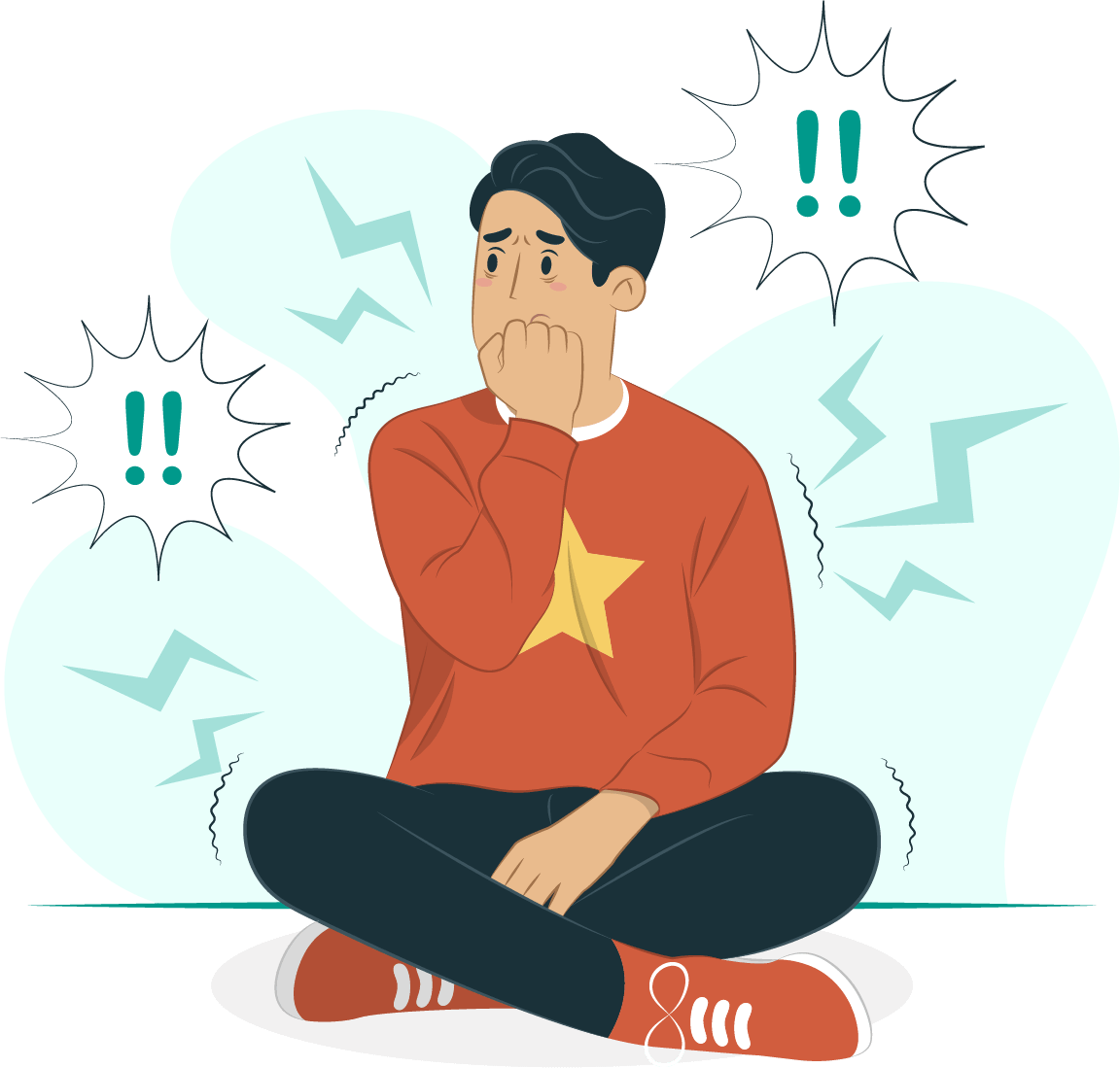Diagnosis and Treatment
Depression and Anxiety
How to Identify and Treat Coexisting Symptoms?
 Depression and anxiety might seem pretty distinct, for the most part.
Depression and anxiety might seem pretty distinct, for the most part.
The main symptom of depression is typically a lingering low, sad, or hopeless mood, while anxiety mainly involves overwhelming feelings of worry, nervousness, and fear.
But these conditions do actually share several key signs. Anxiety, for example, often involves irritability — and some people with depression may feel more irritable than sad.
Since these conditions can show up differently from person to person, you may not always know exactly what your symptoms mean.
It’s also possible to have both depression and anxiety at the same time: A worldwide survey from 2015 found that 41.6 percent of people reported having both major depression and an anxiety disorder during the same 12-month period.
One important thing depression and anxiety have in common? Both can improve with support from a mental health professional.
Getting a Diagnosis of Anxiety and Depression
 If you’re not feeling quite like yourself, a good next step involves reaching out to a mental health professional or other clinician who treats anxiety and depression.
If you’re not feeling quite like yourself, a good next step involves reaching out to a mental health professional or other clinician who treats anxiety and depression.
Your regular clinician, if you have one, can offer a referral to a therapist. Depending on your symptoms, they might also recommend blood, urine, and other lab testing to help rule out underlying medical concerns. Certain health conditions, including thyroid conditions, can involve depression and other changes in mood.
No single test can diagnose depression or anxiety. Instead, your therapist will generally start by asking questions about your symptoms, including how long you’ve had them and how they affect your daily life, to get more insight on what you’re experiencing.
Keep in mind an open and honest description of your mood can help them better understand how you’re feeling, which can lead them to the correct diagnosis.
According to criteria in the “Diagnostic and Statistical Manual of Mental Disorders, 5th edition (DSM-5),” diagnosis requires:
• For depression: You experience at least 5 of the 9 main symptoms of depression most days, for at least 2 weeks.
• For anxiety: You experience excessive, uncontrollable worry, along with 3 additional anxiety symptoms most days, for at least 6 months.
If you meet criteria for both conditions, a mental health professional will typically diagnose both.
Managing Anxiety and Depression

Treating co-occurring depression and anxiety can sometimes be more complicated than treating one condition alone. Even when you get treatment for one condition, some symptoms might persist or seem to play off the others.
A therapist can offer more guidance on treatment options for anxiety and depression, but you can also take steps to cope with symptoms on your own.
The strategies below may not always help, but trying different approaches at different times can help you learn more about what works for you. That insight can guide you toward a personalized toolbox of coping strategies, so you always have options to consider when feeling distressed or overwhelmed.
Your therapist can also offer suggestions for new strategies to try, plus offer tips on putting them into practice.
1. Allow yourself to feel what you’re feeling
Depression and anxiety are medical conditions, not the result of failure or weakness, and they’re absolutely not your fault.
2. Do something you have control over
Regaining some control at the moment could help overwhelming feelings feel a little easier to cope with.
3. Maintain a routine
A daily routine or regular schedule can create structure in your life and promote a sense of control, so it can sometimes help ease feelings of anxiety and depression.
4. Aim to get a good night’s sleep
Not enough sleep can worsen symptoms of both anxiety and depression. Experts recommend most adults get between 7 and 9 hours trusted Source of sleep each night for optimal health.
These tips can help you get the sleep you need:
- Make a habit of going to bed and getting up around the same time each day.
- Turn off electronic devices about 1 hour before bedtime.
- Create a soothing ritual that helps you wind down before bed.
- Keep your bedroom dark, cool, and quiet.
5. Try to eat balanced meals
Nourishing your body with whole foods, including fruits, vegetables, lean protein, and whole grains, can help you get the nutrition you need. Caffeine, refined sugars, and processed foods, on the other hand, could potentially worsen symptoms of both anxiety and depression. You don’t need to cut these out of your diet entirely, but try to balance them with nutrient-dense foods when possible.
6. Try a walk around the block
According to 2019 research, 2.5 hours of exercise each week can help relieve both depression and anxiety. Physical activity can help naturally boost your mood by prompting the release of “happy hormones” in your brain.
7. Make time for rest and relaxation
Remember, though: Depression and anxiety are health conditions. If you had the flu, you’d need time to rest, right? Mental health symptoms require recovery time, too. Instead of fixating on the things you think you should be doing, honor your needs by taking time for activities that soothe and relax you.
8. Reach out to loved ones
Strong relationships can go a long way toward improving your outlook and emotional well-being when you live with mental health conditions.


